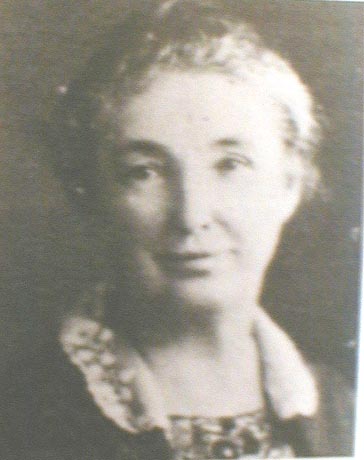Meet Tumamoc's Pioneers & Heroes
Frederick Coville
Volney Spalding
Daniel MacDougal
William Cannon
Burton Livingston
Godfrey Sykes
Francis Lloyd
Burt Bovee
Forrest Shreve
Effie Spalding
Ray Turner
Paul Martin
| |

Effie Southworth Spalding |
Effie Southworth Spalding (1860-1947) accompanied her husband Volney to Tumamoc in October 1903 when he sought respite from his infectious arthritis. She herself was a noted biologist and, although she adjusted the focus of her research to accomodate opportunities at Tumamoc, she continued to do her own research work. Effie along with her husband and W. A. Cannon laid the foundation for research on saguaros. It was she whose careful measurements showed that saguaro ribs allow the cactus, swollen by its newly acquired stores of fresh water after a rain, to expand like an accordion without any danger of their bursting their skin. Mrs. Spalding's paper is one of the earliest works to be done on the Hill. (Spalding, Effie S. 1905. Mechanical adjustment of the sahuaro to varying quantities of stored water. Bull. Torrey Botanical Club 32: 57-68). Afterwards, as they use the water, their girth shrinks back and their ribs become deeper. Her most fundamental contribution, however, were her measurements of saguaro heights. From 1905-1909 she measured the height and growth of sixteen saguaro individuals. Starting from these data, her successor, Forrest Shreve, was able to figure out the speed of saguaro growth, the age at which saguaro branches, and the lifespan of saguaros. |
|
Before arriving in Tucson, Effie Southworth Spalding held several positions: Instructor in Botany at Bryn Mawr College (1885-87); assistant mycologist at the USDA's newly created Section of Mycology (1887-92); and assistant in botany at Barnard College (1892-1895). Having married Volney Spalding in 1895, she moved to Ann Arbor where he was head of the Botany Department, and worked as his assistant there until they moved to Tucson. Her position at the USDA, broke new ground for women: she was the first woman they ever employed as a research scientist! While there, she played a critical role in helping growers combat significant diseases affecting such crops as grapes, apples, and oats. In 1891, Effie Spalding, an expert microscopist, discovered Colletotrichum gossypii, a fungus that was responsible for killing thousands of acres of cotton each year. She both identified the disease and provided growers with measures to control it. After Volney died in 1918, Effie returned to a fulltime academic career. In 1922, at age 62, she received an MS in Botany from the University of Southern California. Her thesis: Form Alterations and Growth in Cacti She became a professor of Botany there and stayed active until she died, age 87, in April, 1947. | |